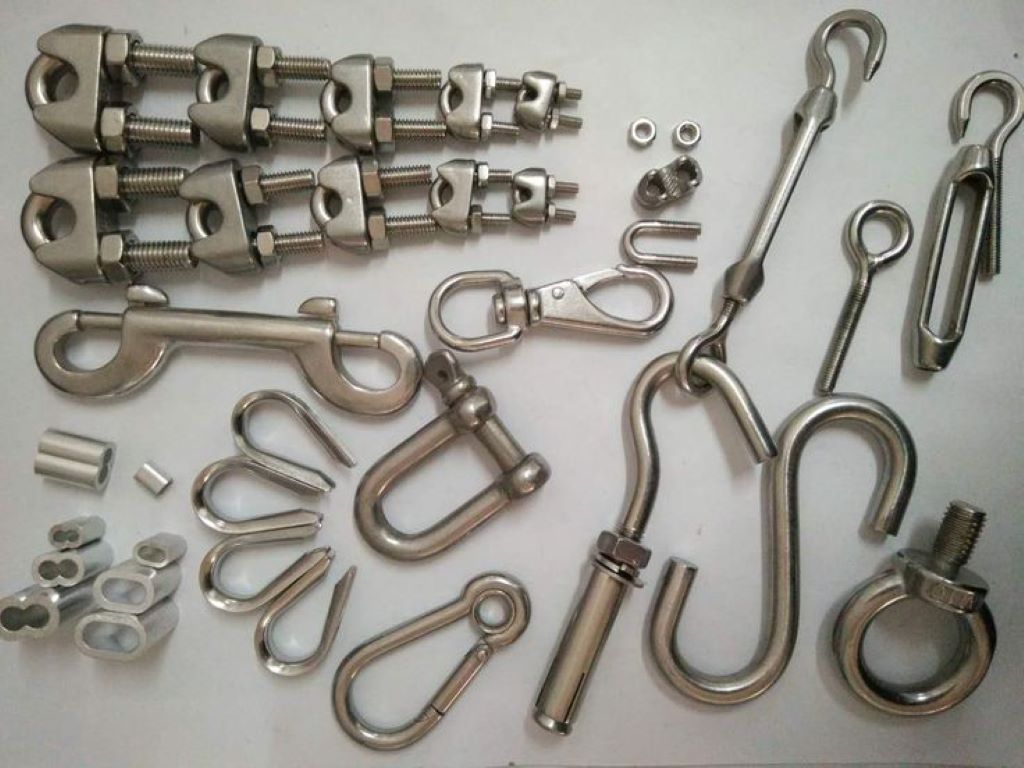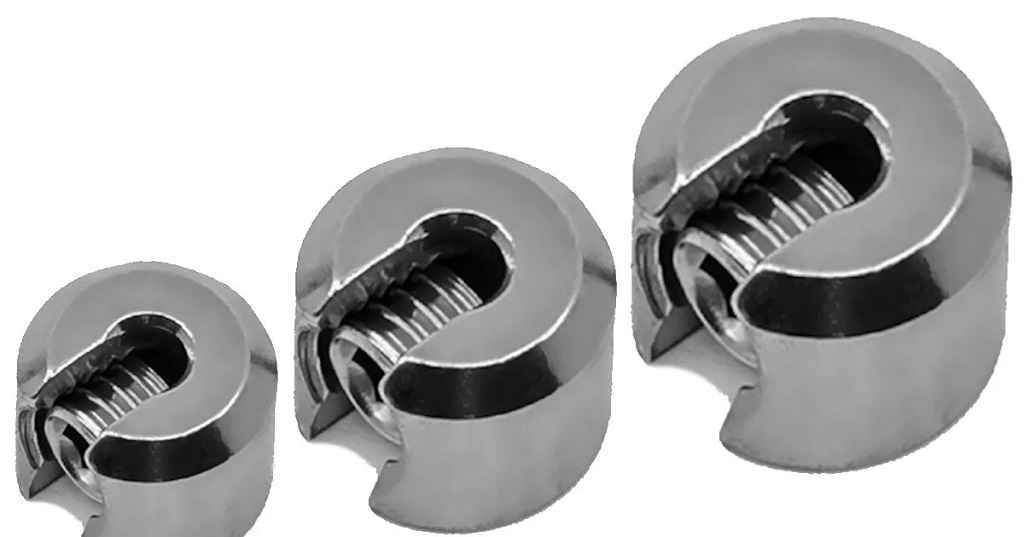Hey there! Have you ever wondered what keeps those sturdy wire ropes in place, whether it’s on a suspension bridge, a ship’s deck, or a construction site? Well, wonder no more! In this comprehensive guide, we’re going to delve into the fascinating world of wire rope stoppers. Think of this as your backstage pass to understanding the unsung heroes of the heavy-duty cable world.
So, what exactly is a wire rope stopper, and why is it crucial in various industries? Let’s dive right in and uncover the answers to these questions and more.
The Basics
Let’s kick things off by understanding the basics. Imagine a wire rope as a strong, flexible, and reliable workhorse used in a multitude of applications, from elevators to cranes, zip lines to suspension bridges. These wire ropes are typically made up of multiple strands of steel wires twisted together to provide strength and flexibility.
Now, picture this scenario: you have a massive load suspended from a wire rope. It’s crucial that the wire rope stays securely in place, preventing any unwanted movement or slippage. This is where wire rope stoppers come into play.
When it comes to wire ropes, a wire rope stopper is a crucial device that helps secure the wire rope and prevent it from slipping or moving. These stoppers come in different sizes, and it’s vital to choose the right size for your wire rope. To determine the correct size to use, it’s advisable to consult a wire rope clamp size chart. Think of a wire rope stopper as a reliable anchor that keeps the wire rope in place, even under immense pressure.
Types of Wire Rope Stoppers
Just like there are different tools for different jobs, there are various types of wire rope stoppers, each tailored to specific applications. Let’s take a closer look at some of the most common types:
- Clamp-On Wire Rope Stopper: This type of stopper is like a clamp that grips the wire rope firmly. It’s often used in applications where the wire rope needs to be temporarily secured or adjusted.
- Wire Rope Thimbles: Thimbles are small, protective devices that are used to prevent the wire rope from getting damaged or crushed when it’s looped back on itself. They’re often used in conjunction with other types of stoppers.
- Socket and Wedge Stopper: This type of stopper involves inserting the wire rope into a socket and then using a wedge to secure it in place. It’s commonly used in crane and lifting applications.
- U-Bolt Wire Rope Clamps: U-bolt clamps, as the name suggests, consist of a U-shaped bolt that fits around the wire rope. Nuts are then tightened to secure the wire rope in place. These are frequently used in construction and rigging.
- Wire Rope Grips: These grips are designed to bite into the wire rope’s surface, providing a firm hold. They’re used in situations where you need a reliable, non-slip connection.
Applications
Now that we’ve got a handle on the types of wire rope stoppers, let’s explore where and why they’re used:
- Construction: In the world of construction, wire rope stoppers are indispensable. They’re used to secure heavy loads, support scaffolding, and anchor structures in place.
- Maritime: On ships and boats, wire rope stoppers play a vital role in anchoring, mooring, and securing cargo. They ensure that ropes stay in place even when facing the wrath of the ocean.
- Mining: In the mining industry, wire rope stoppers are used to secure equipment, create lifelines, and prevent accidents by anchoring critical components.
- Oil and Gas: The oil and gas industry relies on wire rope stoppers for various applications, including drilling, hoisting, and securing equipment on offshore platforms.
- Transportation: From elevators in skyscrapers to cable cars in mountainous regions, wire rope stoppers ensure the safe and smooth movement of people and goods.
- Adventure Sports: If you’ve ever tried your hand at zip-lining, rock climbing, or bungee jumping, you can thank wire rope stoppers for keeping you securely tethered to your adventure.
The Mechanics
Ever wondered how wire rope stoppers manage to hold immense loads without budging? Let’s unravel the mechanics behind these unsung heroes.
- Friction: Most wire rope stoppers rely on friction to keep the wire rope in place. By applying force through clamps, U-bolts, or grips, the stopper creates a grip on the rope that resists slipping.
- Compression: Some stoppers use compression to secure the wire rope. The socket and wedge stopper, for example, compresses the rope within the socket, making it extremely secure.
- Biting Action: Wire rope grips employ a biting action, where serrated jaws dig into the wire rope’s surface. This ensures a strong and non-slip connection.
- Looping and Threading: Thimbles are used to prevent damage when a wire rope is looped or threaded back onto itself. They maintain the rope’s integrity and strength.
Materials Matter
To withstand the demands of different industries and environments, wire rope stoppers are crafted from various materials. Let’s take a look at the common materials used:
- Steel: Steel wire rope stoppers are known for their incredible strength and durability. They are often used in heavy-duty applications where safety is paramount.
- Aluminum: Aluminum stoppers are lightweight and corrosion-resistant, making them ideal for maritime applications where exposure to saltwater is a concern.
- Bronze: Bronze stoppers offer excellent resistance to corrosion, especially in marine environments. They are commonly used in sailing and boating.
- Stainless Steel: Stainless steel stoppers combine strength with corrosion resistance, making them versatile for a wide range of applications, including construction and mining.
- Plastic: Plastic stoppers are lightweight and cost-effective. They find use in less demanding applications where high strength is not required.
Maintenance Matters
Just like any other equipment, wire rope stoppers require regular maintenance to ensure they perform their job effectively and safely. Neglecting maintenance can lead to accidents and costly downtime. Here are some maintenance tips:
- Visual Inspections: Regularly inspect wire rope stoppers for signs of wear, damage, or corrosion. Any issues should be addressed promptly.
- Cleaning: Keep stoppers clean and free from dirt and debris that can interfere with their grip.
- Lubrication: Apply lubricants as recommended by the manufacturer to prevent corrosion and ensure smooth operation.
- Tightening: Check nuts, bolts, and clamps for proper tightness to maintain a secure grip on the wire rope.
- Replacement: Replace any damaged or worn-out stoppers immediately. Using compromised stoppers can jeopardize safety.
Safety First
When it comes to wire rope stoppers, safety should always be the top priority. Here are some safety considerations to keep in mind:
- Proper Installation: Ensure that wire rope stoppers are installed correctly, following the manufacturer’s guidelines and recommendations.
- Regular Inspections: Perform routine inspections to detect any wear, damage, or deterioration in the stoppers.
- Load Limits: Never exceed the specified load limits for wire rope stoppers. Doing so can lead to catastrophic failures.
- Training: Provide proper training to personnel who work with wire rope stoppers to ensure they understand the equipment and safety procedures.
- Emergency Procedures: Have clear emergency procedures in place in case of accidents or equipment failures.
FAQs
Now that we’ve covered the essentials of wire rope stoppers, let’s address some frequently asked questions to solidify your understanding:
1: Can I use any type of wire rope stopper for my application?
No, it’s crucial to select the right type of wire rope stopper based on your specific application. Different stoppers are designed for different purposes, so choose the one that best suits your needs.
2: Are wire rope stoppers reusable?
Yes, many wire rope stoppers are reusable, but it depends on the type and the manufacturer’s recommendations. Always check the manufacturer’s guidelines for information on reuse.
3: Can wire rope stoppers be used in extreme weather conditions?
Yes, some wire rope stoppers are designed to withstand extreme weather conditions, including high heat or cold. However, it’s essential to choose the appropriate material and design for the specific environment.
4: How often should I inspect and maintain wire rope stoppers?
Regular inspections should be conducted according to the manufacturer’s recommendations. In harsh environments or high-stress applications, more frequent inspections may be necessary.
5: What should I do if I suspect a wire rope stopper is damaged or compromised?
If you suspect that a wire rope stopper is damaged or compromised in any way, it should be immediately taken out of service and replaced. Safety should always be the top priority.
Conclusion
Congratulations! You’ve just completed your crash course in wire rope stoppers. Do you get silk rope in grounded? These unassuming devices play a vital role in industries ranging from construction to maritime and beyond, serving as essential components for various applications. They are the unsung heroes that keep our heavy-duty cables securely in place, ensuring the safety of countless operations and adventures.
Whether you’re a professional working with wire rope stoppers daily or someone with a newfound appreciation for these essential tools, remember that safety always comes first. Proper installation, regular inspections, and adherence to load limits are key to ensuring that wire rope stoppers do their job effectively.
So, the next time you encounter a massive suspension bridge, a towering construction crane, or a thrilling zip line, take a moment to appreciate the wire rope stoppers that make it all possible. They may not be in the limelight, but they’re undoubtedly the backbone of these incredible feats of engineering.
Now, armed with your newfound knowledge, you’re ready to tackle the world of wire rope stoppers with confidence. Stay safe, stay informed, and keep those heavy loads securely in place!


